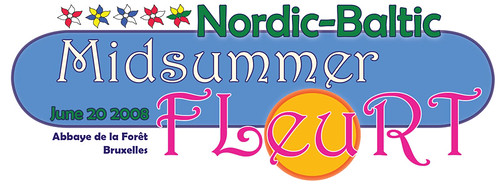 summer has to hurry to get things done before the nights turn cold in September and everything stops growing. At Midsummer, the Swedish summer is a lush green and bursting with chlorophyll, and the nights are scarcely dark at all. In the north, the sun never sets.
summer has to hurry to get things done before the nights turn cold in September and everything stops growing. At Midsummer, the Swedish summer is a lush green and bursting with chlorophyll, and the nights are scarcely dark at all. In the north, the sun never sets.Maypoles and dancing
Swedes like the world to be well-ordered, so Midsummer Eve is always a Friday. People often begin the day by picking flowers and making wreaths to place on the maypole, which is a key component in the celebrations. The maypole is raised in an open spot and traditional ring-dances are taking place. And yes, the rumor is true; Swedes do pretend to be frogs when dancing around the maypole!
Herring and boiled new potatoes
 A typical Midsummer menu features different kinds of pickled herring, boiled new potatoes with fresh dill, soured cream and raw red onion. This is often followed by a grilled dish of some kind, such as spare rib or salmon, and for dessert the first strawberries of summer, with cream. The traditional accompaniment is a cold beer and schnapps, preferably spiced.
A typical Midsummer menu features different kinds of pickled herring, boiled new potatoes with fresh dill, soured cream and raw red onion. This is often followed by a grilled dish of some kind, such as spare rib or salmon, and for dessert the first strawberries of summer, with cream. The traditional accompaniment is a cold beer and schnapps, preferably spiced.  Every time the glasses are refilled, singing breaks out anew. Swedes like drinking songs, and the racier the better.
Every time the glasses are refilled, singing breaks out anew. Swedes like drinking songs, and the racier the better.



